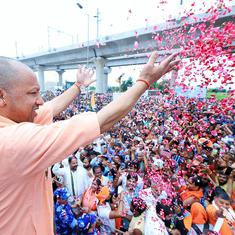The Ganges Water Treaty between Bangladesh and India will expire in 2026, as the year will complete the treaty’s 30-year lifespan. Bangladesh and India signed this treaty in 1996 to share water among themselves. Under the treaty, the upper riparian India and lower riparian Bangladesh agreed to share the water of this transboundary river. After 27 years, many new issues have arisen that need to be solved. Whether the treaty would be renewed or not is also another concern.
The futile hydro-negotiations of the last decade on 54 transboundary rivers are also a bleak picture with little success. Moreover, if the negotiations on renewal take place, it will be a tough negotiation, especially for lower riparian Bangladesh considering the importance of the Ganges for both countries, the growing climate vulnerability in South Asia, and the hydro-hegemonic approach of India. Therefore, Bangladesh must sit in the negotiations well-prepared. Perhaps, it is time for Bangladesh to start taking preparation in both field and diplomatic levels for the negotiation scheduled in 2026.
Existing issues
The Ganges is a transboundary river flowing between Bangladesh and India. Through the 1996 treaty, Bangladesh successfully established its claim on the Ganges water. In this sense, it was a successful negotiation for Bangladesh. But there were various aspects where the country could not bring diplomatic success. First, the treaty was based on inaccurate data on future water flow. Second, the agreement also established an unequal share for Bangladesh. Bangladesh faces “underflow” during the dry season that hampers its agricultural production and life along the river bank. Third, the treaty also failed to establish a proper and effective monitoring system.
Even though committees under the Joint River Commission monitor the flow, there is hardly any effectiveness. In many instances, Bangladesh did not receive guaranteed flow. A research published in 2019 titled “A Critical Review of the Ganges Water Sharing Arrangement” revealed that, between 1997 and 2016, Bangladesh received less water at the Hardinge bridge on 94 out of 300 occasions than what “presumably” was released from the Farakka barrage in India. Bangladesh did not receive guaranteed flow on 39 out of 60 occasions during the dry season. Fourthly, India’s increasing water withdrawal also impacts the river’s flow in lower-riparian Bangladesh.
Additionally, Bangladesh’s national demand for freshwater is increasing rapidly. The adverse impact of climate change and pollution has changed the scenario after 27 years of inking the agreement. Pollutants and industrial discharge are now emergent concerns in water sharing unlike before.
The future of Farakka Barrage is another major concern for Bangladesh. Unilaterally built Farakkha has already brought severe adverse impacts for Bangladesh. An impact assessment study on Bheramara upazila of Bangladesh revealed that 65% of crops were directly affected by Farakka Barrage because it has changed the agricultural pattern of the region in which 34% of crops were extinct due to scarcity of water, lowering the groundwater level, less access to rainwater, etc.
The situation is more or less the same in other upazilas as well.
Not limited to Bangladesh, India’s Bihar state also suffers the adverse impact of the barrage. Bihar faces increasing flooding due to the barrage. In 2016, Bihar’s chief minister demanded the removal of the barrage for flood concerns. In 2021, the water resources development minister of the same state also demanded a restructuring of the barrage to avoid recurring floods.

What Bangladesh should prepare for
The inaccurate projection of future water flow in 1996’s negotiation has put Bangladesh in a difficult position in the last 27 years. Bangladesh needs accurate field data and predictions on future water availability this time. To avoid inaccurate flow, Bangladesh needs to document statistical analysis of the incidents where either Bangladesh experienced underflow or overflow. Bangladesh also needs to explore the mechanism to avoid such incidents.
Bangladesh needs an actual projection of its freshwater demand and negotiate accordingly. The new treaties, therefore, need to incorporate provisions to avoid discharging pollutants into the river.
Besides ensuring national interests, the Joint River Commission should assess the impact of climate change properly to save the river together. The river is considered a living entity in South Asian discourse. Saving a transboundary river requires transboundary effort.
At the diplomatic level, Bangladesh must try to understand India’s intention regarding the renewal. Both countries should mobilise the Joint River Commission to take necessary pre-negotiations and schedule negotiations for renewal. Recurring hydro-diplomacy in all tracks (I, 1.5, II, and III) would help the nations to understand each other’s priorities and concerns regarding the Ganges.
As Bihar also faces the adverse impacts of the Farakka barrage, Bangladesh may diplomatically reach Bihar’s state government to create a consensus on the barrage. Moreover, the diplomats may explore the possibility of a third-party guarantor to strengthen the treaty. Such a treaty is not new in South Asia.
In 1961, India and Pakistan signed the Indus River treaty- guaranteed by the United Nations and the World Bank.
Considering the hydro-hegemony and emerging water scarcity in South Asia, exploring such an option is not unrealistic.
A new dimension
Over the last two decades, river management technologies have become available to both Bangladesh and India thanks to their prosperous economy. The technological intervention has become a new approach to River Management. For instance, Bangladesh is currently implementing the Teesta River Comprehensive Management and Restoration Project to restore the Teesta River with Chinese River Technology.
The Padma Bridge project also has a river management project. The renewal of the treaty may also explore the possibility of a reservoir to address freshwater concerns or combat climate change through technological intervention.
The Ganges provide a lifeline for Bangladesh. Hence the renewal of the treaty is very important. In the renewal, Bangladesh needs to ensure its freshwater demand, address climate change, and ensure guaranteed flow in most cases. But the negotiation will be tough as India also has its own priorities.
The work and following negotiation will be a mammoth task, yet there is room for prudence and science. Even though Bangladesh is passing an election year, whoever comes to power, will have to ink the renewal in 2026. So, it is time for Bangladesh to start taking preparation at both field and diplomatic levels.
Doreen Chowdhury is a Doctoral Researcher at the University of Groningen.
This article was first published on Dhaka Tribune.










